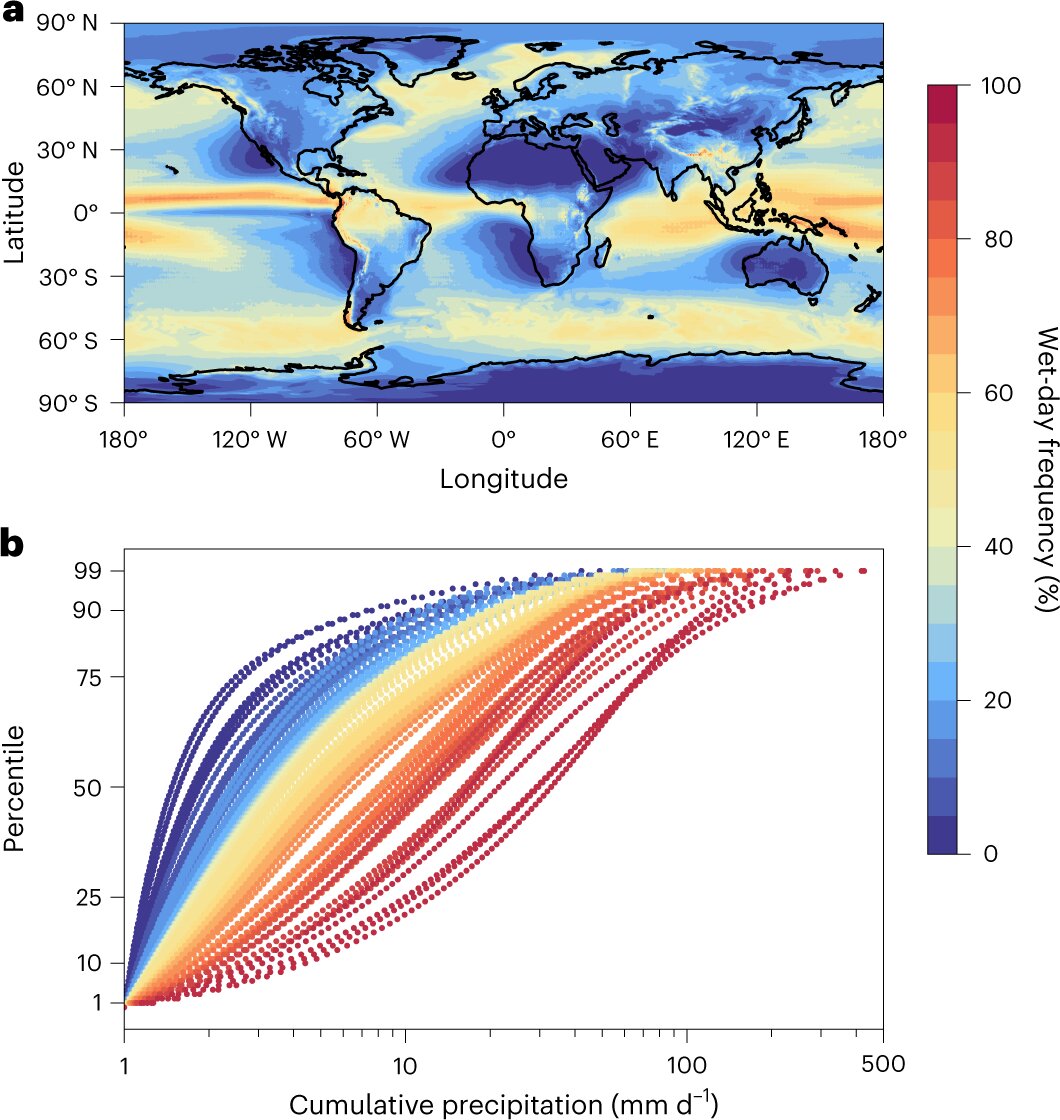

With the recent increase in extreme weather events both in New Zealand and globally, a new study published in Nature Geoscience aims to improve the prediction of heavy rainfall and provide earlier warnings to the public. Cameron McErlich, a Ph.D. student at the University of Canterbury, used models and satellite observations to examine daily rainfall. His research found that if you know how often it rains annually in a particular location, you can predict the likelihood and size of extreme rainfall in that place.
The study is vital because current weather and climate research treats these things separately, making it difficult to understand the regions where extremes might change. McErlich’s research also identifies that there are similar underlying processes globally for areas that experience frequent high rainfall.
The research has crucial implications for how rainfall patterns might change and where extreme rainfall occurs. In particular, it suggests that New Zealand needs to think about rainfall regions on the East and West coasts differently. Currently, weather stations are not well-distributed, especially over the ocean, so this research provides verification that the old adage “when it rains, it pours” is accurate.
The study also provides a new way to view changes in intensity and frequency of rainfall in an integrated way, which should help better understand climate projections of future rainfall. It is not only important for New Zealand but globally, as climate change influences the frequency and intensity of extreme weather events.
McErlich’s research, supervised by UC Professor Adrian McDonald and Victoria University of Wellington Professor James Renwick, is a significant step forward in improving the prediction of extreme rainfall and providing earlier warnings. Through the research, McErlich and his team hope to provide the public with better tools to prepare for extreme weather events and reduce the impact on communities.
In the battle against climate change, reforestation has emerged as a beacon of hope, particularly…
Mars continuously captivates scientists and enthusiasts alike with its astonishing geological phenomena. Recently, the Perseverance…
In the rapidly advancing realm of technology, the emergence of quantum computing heralds a transformative…
Opioids have long been heralded as among the most effective solutions for alleviating intense pain,…
As of late March 2025, the measles outbreak that originated in west Texas has spiraled…
Water contamination by nitrates poses a dire threat not only to ecosystems but also to…
This website uses cookies.